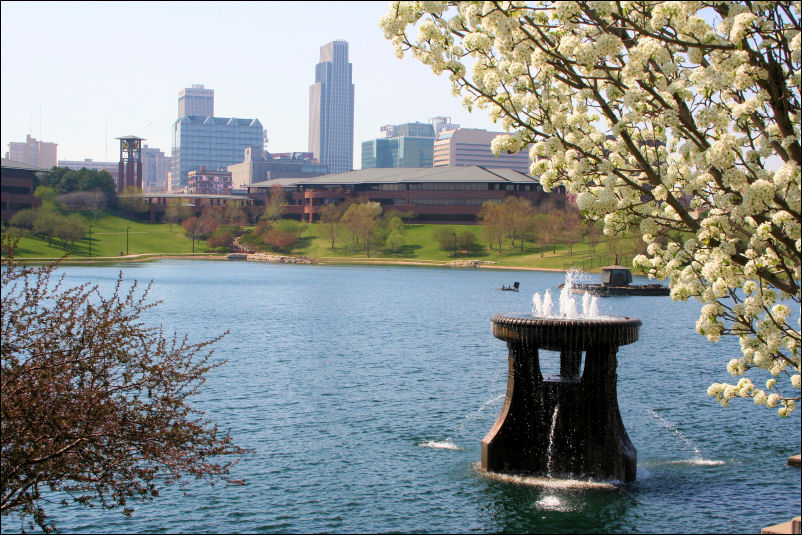
Five cheap, safe, mid-sized cities to move to
With remote work having freed so many of us from the shackles of office buildings, it may be tempting to look across the nation for affordable cities to relocate to. But where to begin? So many cities boasting low cost housing, like Detroit and Cleveland, have some significant problems with violent crime and property crime. Let’s take a look at five small cities who:
- Have 1 bedroom rentals available under $1,000 a month.
- Have 2 bedroom homes for sale under $200,000.
- Have violent crime index 50 or less.
- Have property crime index 60 or less.
- Have populations between 100,000 to 500,000.
Des Moines, Iowa – Population 214,000

The first city on our list sits in the heart of the midwest, and is famous for its huge insurance industry, it’s important place in presidential politics, and its rather brutal winters. Let’s get this out of the way first: Don’t move here if you can’t handle a little snow, as they get nearly three feet a year on average as temperatures plunge into the teens during winter nights. The summers, however, are mild and pleasant. The city does have some property crime problems (the highest on our list with a property crime index of 60), and there is a lack of nightlife and entertainment venues here. On the up side, Sperling’s Best Places named it one of the ten best American cities to move to, citing its secure job market, low cost of living, and new improvements to its cultural and educational offerings. Major attractions to the city include a zoo, a large botanical garden, the Science Center of Iowa (complete with IMAX screen), and the Iowa State Capitol Building. As a bonus, you are less than a two hour drive from the next city on our list…
Omaha, Nebraska – Population 463,000

The biggest city on our list, Omaha, is also the city with the lowest average housing cost, a mere $177,000. Apartments can also be found in the middle of its rather safe and bustling downtown for less than $900, making this city one of the biggest cheap cities in America that doesn’t have serious crime problems. In fact, Navy Federal Credit Union named Omaha its #2 city in the country for service members to relocate to after their military service, citing its economic health, access to health and education, and overall quality of life. Omaha has a wide array of museums and parks, as well as the world-class Henry Doorly Zoo. It shares some of the same problems as its neighbor, Des Moines: Cold winters and a lackluster night life. As it is located in the middle of the great plains, there are limited options for camping and outdoor recreation in the region.
Boise, Idaho – Population 226,000

One of the fastest growing cities in the country is Boise, which grew 18% between 2010 and 2018. Boise is in the middle of a transformation from a Big Sky Country town into a mid sized western city that may come to resemble the likes of Portland and Denver. Microbrews, Indian and Thai restaurants, and public art installations are still new to Idaho, but have quickly become features of life in Boise, which also happens to be the safest city on this list. Because so much of the city is new, there are very few quaint, historical neighborhoods to enjoy. But hey, you get a Trader Joe’s and a booming restaurant scene, so consider it a tradeoff. Another possible issue with Boise’s rapid growth is the suburban sprawl, and a bus-based mass transit system that hasn’t been able to keep up with the population expansion.
Richmond, Virginia – Population 220,000

Heading back east we find the beautiful mid-Atlantic city of Richmond. Richmond is an old city, incorporated in 1742 and the capital of Virginia. It is high subjective, but Richmond may have the most attractive, interesting, and walkable downtown of any city on this list. In fact, it has downtown walk scores comparable to larger and famously pedestrian cities like Portland Oregon and Philadelphia. It’s also a rather safe downtown, with middling property crime and low violent crime stats. The city has a strong economy (driven by the law and finance industries) despite its reasonable housing prices. The city is full of excellent museums and has several historic districts of interest, including Jackson Ward and Shockoe Slip. On the down side, summers can get pretty warm here, often breaking into the 90s. The schools and public transit systems have also been somewhat neglected, making it hard to be car-less unless you live along one of the few frequently serviced bus routes in the city.
Grand Prairie, Texas – Population 188,000

Probably the least widely known of all the cities on our list, Grand Prairie nevertheless has some great things going for it. Grand Prairie has both a very low crime rate and attractive housing costs (many homes available under $200k, one bedroom apartments can be found for rent under $900/mo). It is located near big-city amenities, including world class entertainment, a major international airport, and a tremendous number of museums and shopping centers. It has a suburban feel, being sandwiched between the two large cities of Fort Worth and Dallas, which may not be to everyone’s taste. This suburban layout also means there is poor access to mass transit and few walkable areas, so car ownership is recommended. The summers might also make you think twice about living in central Texas, with July afternoons regularly soaring into the high 90s. The Dallas-Fort Worth area can also experience some extreme weather conditions, like hail and hurricanes. But if that doesn’t scare you off, consider the great value and quality of life Grand Prairie might offer you.